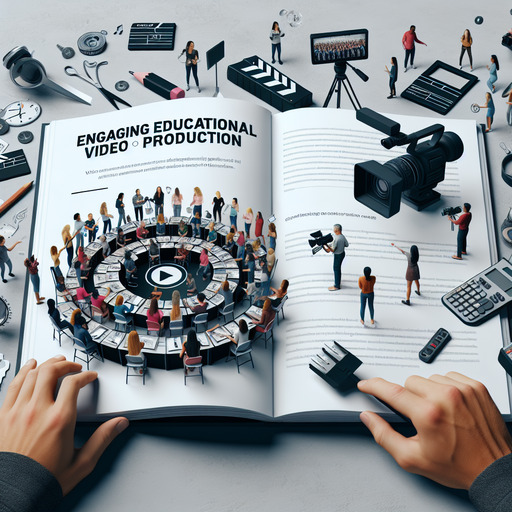
-
Table of Contents
Unlock the secrets to engaging educational content! Discover top techniques for captivating students and teachers with our expert video production guide. Learn more now!
Introduction
Video production for schools is an innovative approach to education that leverages the power of visual storytelling to engage both students and teachers. By incorporating dynamic techniques such as storyboarding, scripting, filming, and editing, educators can create compelling content that enhances learning experiences and fosters a deeper understanding of the material. Effective video production in an educational setting involves understanding the audience, utilizing appropriate technology, and employing creative strategies to maintain interest and convey information clearly. This method not only aids in the retention of knowledge but also encourages active participation and collaboration among students, making learning more interactive and enjoyable.
Techniques To Captivate Students And Teachers In Educational Video Production
In the realm of education, video production has emerged as a powerful tool to engage both students and teachers. The dynamic nature of video content can transform traditional learning experiences, making them more interactive and memorable. To captivate students and teachers effectively, several techniques can be employed in educational video production.
First and foremost, understanding the audience is crucial. Students and teachers have different needs and preferences, and tailoring content to meet these can significantly enhance engagement. For students, incorporating elements of storytelling can be particularly effective. Narratives that relate to their experiences or interests can make complex subjects more relatable and easier to understand. For teachers, providing clear, concise, and well-organized content that can be easily integrated into lesson plans is essential.
Transitioning to the technical aspects, high-quality visuals and sound are fundamental. Poor video or audio quality can be distracting and detract from the educational message. Investing in good equipment and ensuring proper lighting and sound can make a significant difference. Additionally, using visual aids such as graphics, animations, and infographics can help illustrate key points and maintain viewer interest. These elements can break down complicated information into digestible segments, making learning more accessible.
Moreover, the pacing of the video is another critical factor. Videos that are too long or too fast-paced can lose the viewer’s attention. Striking a balance by keeping videos concise yet comprehensive is key. Segmenting content into shorter, focused modules can help maintain engagement and allow for better retention of information. This modular approach also provides flexibility for teachers to incorporate videos into their curriculum as needed.
Interactive elements can further enhance the learning experience. Incorporating quizzes, polls, and discussion prompts within the video can encourage active participation. These interactive features not only keep viewers engaged but also provide immediate feedback, reinforcing learning outcomes. For instance, a video on a scientific concept could include a quick quiz at the end to test comprehension, making the learning process more dynamic and interactive.
Another effective technique is the use of real-world applications and examples. Demonstrating how theoretical concepts apply in real-life scenarios can make the content more relevant and interesting. For example, a math video that shows how geometry is used in architecture can spark curiosity and provide practical context. This approach can bridge the gap between abstract concepts and tangible applications, making learning more meaningful.
Furthermore, involving students and teachers in the video production process can foster a sense of ownership and engagement. Encouraging students to participate in creating content, whether through acting, scripting, or providing feedback, can make the learning experience more collaborative and enjoyable. Similarly, teachers can contribute their expertise and insights, ensuring that the content is pedagogically sound and aligned with educational standards.
Lastly, accessibility is a vital consideration. Ensuring that videos are accessible to all students, including those with disabilities, is essential. Providing subtitles, transcripts, and alternative formats can make content more inclusive. This not only complies with accessibility standards but also ensures that all students have equal opportunities to benefit from the educational material.
In conclusion, video production for schools requires a thoughtful blend of content, technical quality, pacing, interactivity, real-world relevance, collaboration, and accessibility. By employing these techniques, educational videos can captivate both students and teachers, transforming the learning experience and fostering a more engaging and effective educational environment.
Q&A
1. **How can schools use video production to engage students and teachers?**
Schools can use video production to engage students and teachers by incorporating interactive and visually appealing content, such as educational videos, student-led projects, and teacher tutorials. Techniques include using storytelling to make lessons more relatable, integrating animations and graphics to simplify complex concepts, and encouraging student participation in video creation to foster creativity and collaboration. Additionally, live streaming school events and creating video newsletters can keep the school community informed and connected.